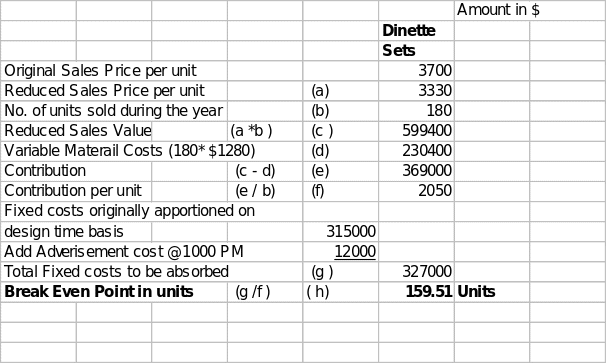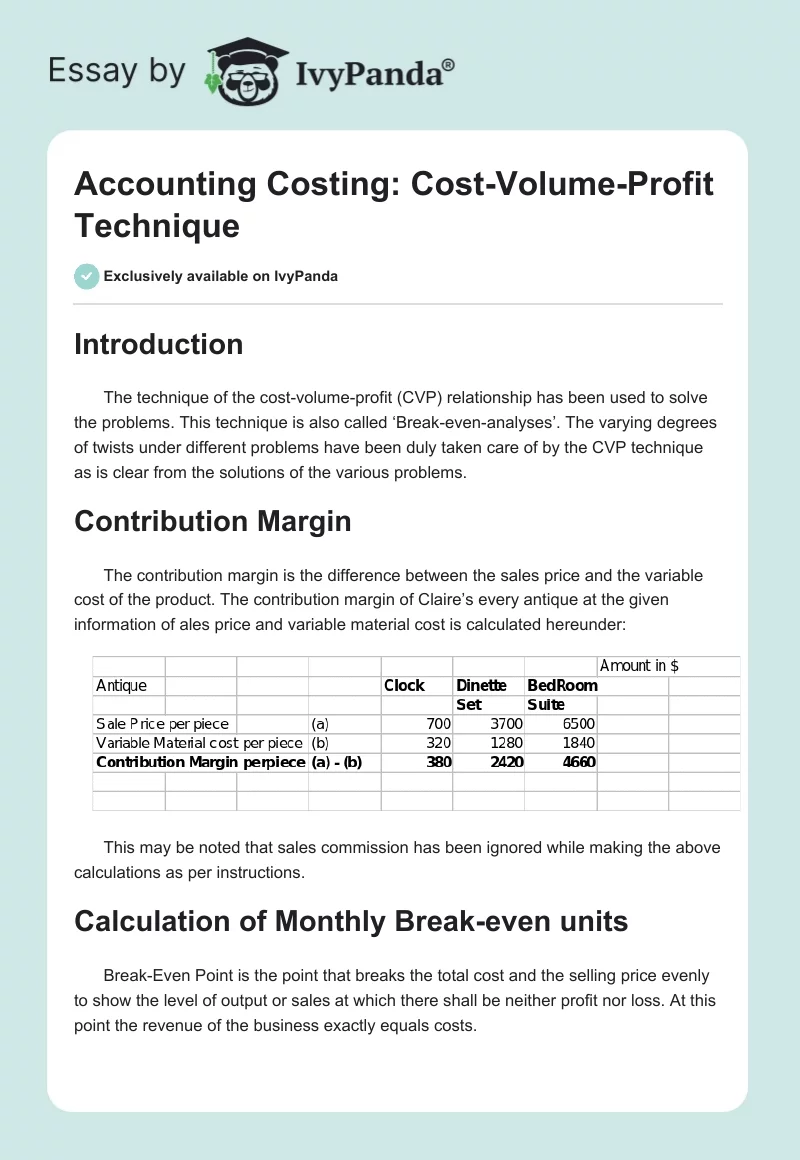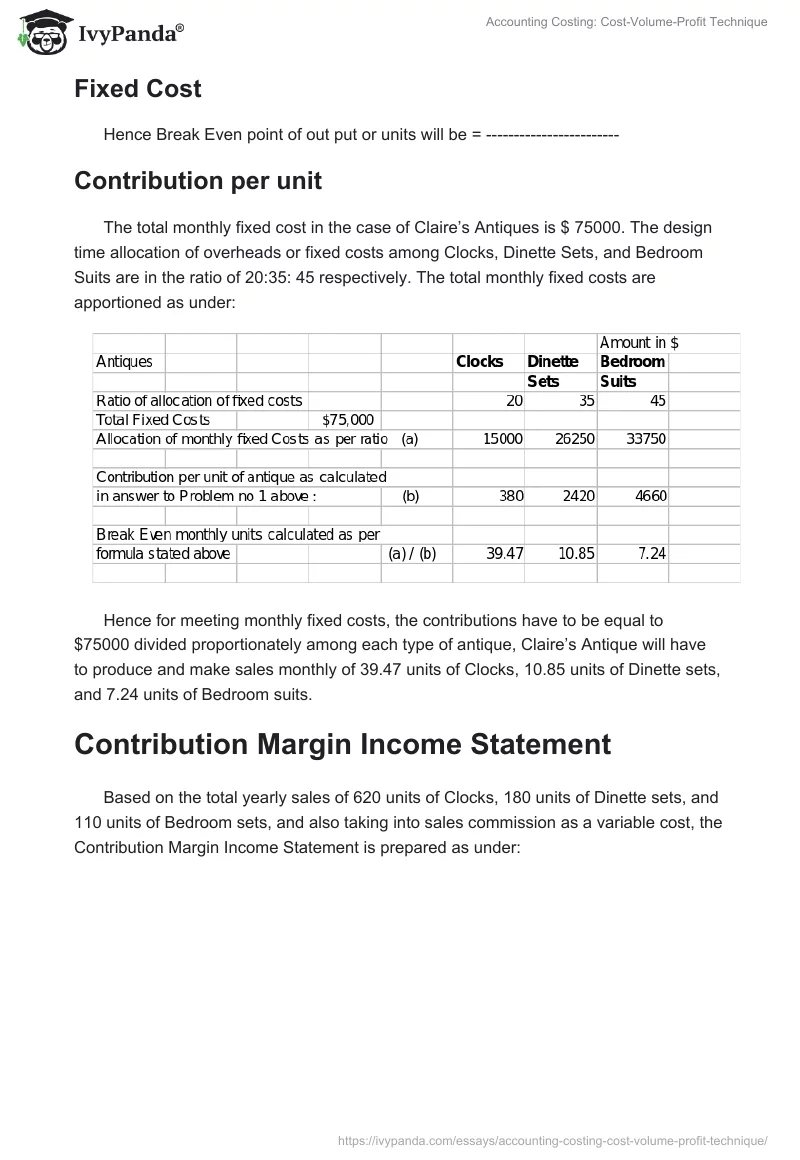Introduction
The technique of the cost-volume-profit (CVP) relationship has been used to solve the problems. This technique is also called ‘Break-even-analyses’. The varying degrees of twists under different problems have been duly taken care of by the CVP technique as is clear from the solutions of the various problems.
Contribution Margin
The contribution margin is the difference between the sales price and the variable cost of the product. The contribution margin of Claire’s every antique at the given information of ales price and variable material cost is calculated hereunder:

This may be noted that sales commission has been ignored while making the above calculations as per instructions.
Calculation of Monthly Break-even units
Break-Even Point is the point that breaks the total cost and the selling price evenly to show the level of output or sales at which there shall be neither profit nor loss. At this point the revenue of the business exactly equals costs.
Fixed Cost
Hence Break Even point of out put or units will be = ————————
Contribution per unit
The total monthly fixed cost in the case of Claire’s Antiques is $ 75000. The design time allocation of overheads or fixed costs among Clocks, Dinette Sets, and Bedroom Suits are in the ratio of 20:35: 45 respectively. The total monthly fixed costs are apportioned as under:
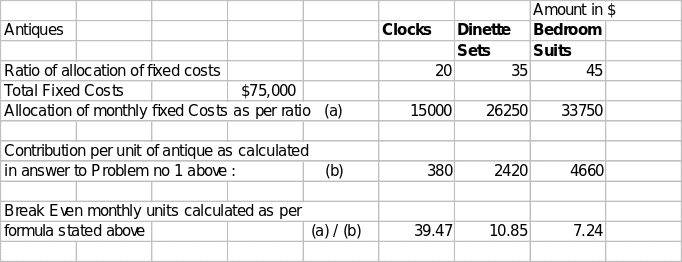
Hence for meeting monthly fixed costs, the contributions have to be equal to $75000 divided proportionately among each type of antique, Claire’s Antique will have to produce and make sales monthly of 39.47 units of Clocks, 10.85 units of Dinette sets, and 7.24 units of Bedroom suits.
Contribution Margin Income Statement
Based on the total yearly sales of 620 units of Clocks, 180 units of Dinette sets, and 110 units of Bedroom sets, and also taking into sales commission as a variable cost, the Contribution Margin Income Statement is prepared as under:
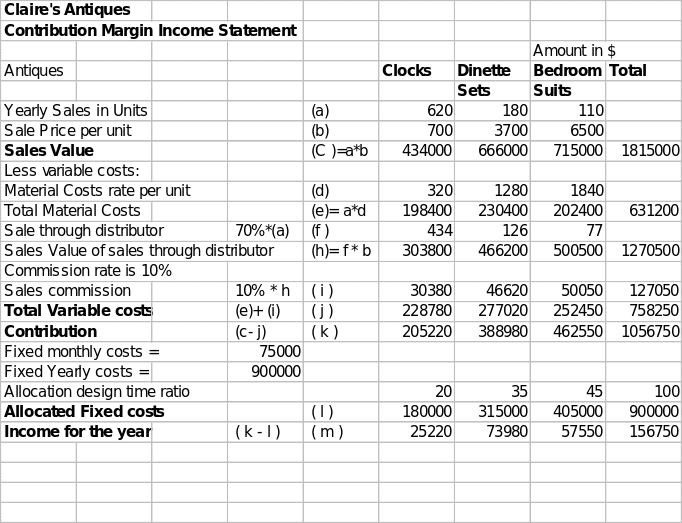
Note that information about monthly fixed costs is provided at $75000. Before allocation these monthly fixed costs were converted into yearly total fixed costs and then allocated in the ratio 20:35: 45 among clocks, dinette sets, and bedroom suits respectively.
Also, the distributor’s commission has been calculated on 70% of the sales as that was expected sales through distributors.
Effects of increase in sales commission to 15%
With the increase in distributor’s sales commission by 5%, the total commission would be calculated as under:

With the increase in distributor’s commission, Claire’s Antiques will have to pay an additional $63525 as sales commission. Accordingly, the contribution and the net income will be reduced by that amount.
As Claire’s Antiques does not want to change the selling prices, the cost of the product will be reduced by that amount. The other variable cost incurred on the products is material costs. The required reduction in the material in order to maintain the same contribution is calculated as under:
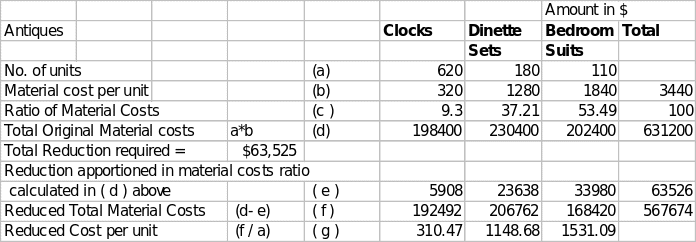
Accordingly to maintain the same contribution Claire’s Antiques will have to purchase the variable material at the reduced cost per unit calculated above.
If it is not possible to reduce the material cost, which is variable, the other alternative is to make savings on fixed costs. The total fixed costs for the year are $90000 (75000*12). Claire’s Antiques will have to reduce it to $836475 (i.e.$900000- $63525) to maintain the same income with the reduced contribution.
New Break-Even Point for Dinette Sets
The changed assumptions are:
- Sales Price is reduced by 10%, and
- Additional advertisement costs of $1000 per month to be absorbed by Dinette sets only
- Sales commission is ignored.
Under this scenario the yearly break-even point for Dinette sets is calculated as under:
